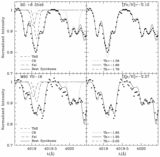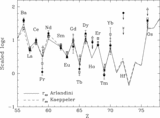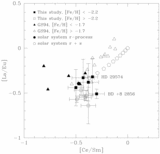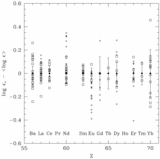Image Details
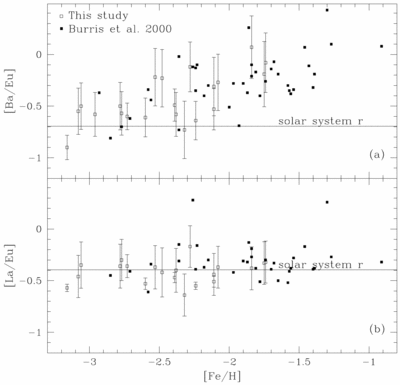
Caption: Fig. 4.
(a) [Ba/Eu] vs. [Fe/H] and (b) [La/Eu] vs. [Fe/H] for our sample (open squares) and the Burris et al. (2000) sample (filled squares). There is no trend for increasing [La/Eu] as [Fe/H] increases, as would be predicted by the [Ba/Eu] results. We believe that both sets of Ba abundances become increasingly unreliable as [Fe/H] increases, because of the strong dependence of Ba on ξ. Our [La/Eu] values are consistent with only a solar system r‐process contribution. The offset between the two data sets in [La/Eu] is most likely a result of somewhat different line lists combined with imperfect gf values. Since we have 17 stars in common, the offset is not due to markedly different samples of stars. The solar system r‐process ratios are from Arlandini et al. (1999). The poor agreement between the solar system r‐process and the lower limit for our [Ba/Eu] could be due in part to uncertainties in the solar system predictions (see Fig. 3).
Copyright and Terms & Conditions
© 2001. The American Astronomical Society. All rights reserved. Printed in U.S.A.




